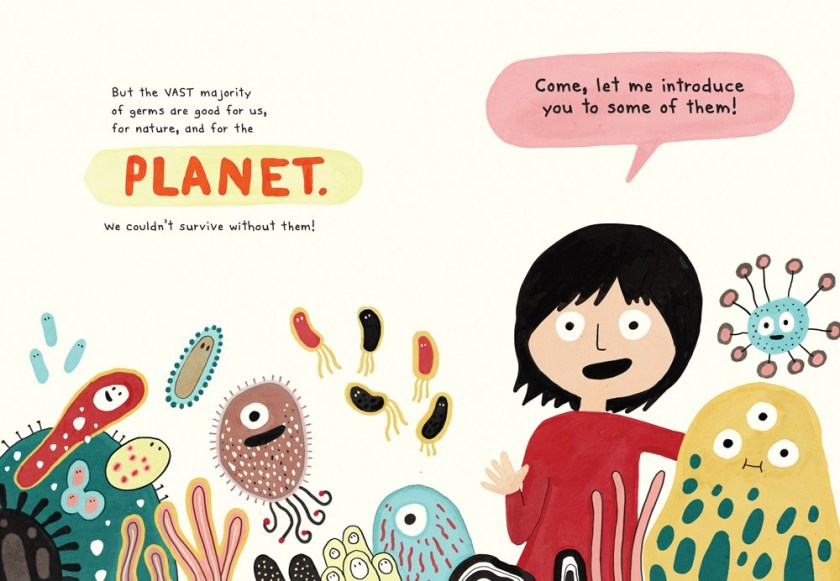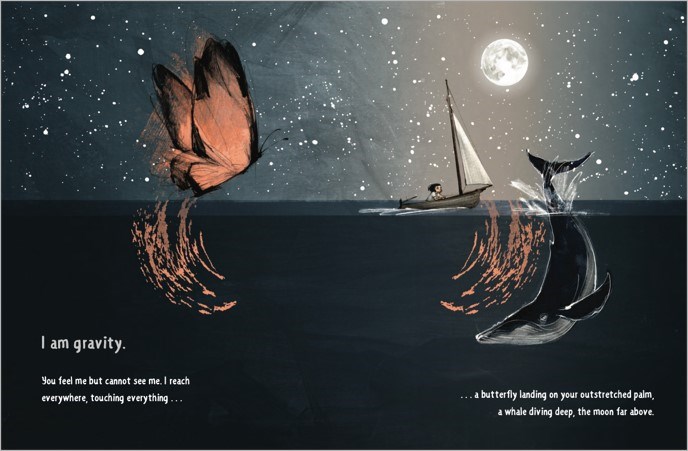I’m back with some new books to explore fun STEM concepts. I really miss having a Discovery Club at my library… maybe I’ll use these as a way to gauge some interest again.
 Tree Spirits (2nd Ed., Revised), by Louise Wannier/Illustrated by April Tatiana Jackson, (Sept. 2023, True Roses Books), $24.95, ISBN: 9780990997658
Tree Spirits (2nd Ed., Revised), by Louise Wannier/Illustrated by April Tatiana Jackson, (Sept. 2023, True Roses Books), $24.95, ISBN: 9780990997658
Ages 3-8
This book was published in September of last year, but I’ve just seen a copy and wanted to include it here. Incorporating nature and art, Wannier creates fun rhymes that encourage readers to think and wonder at different photos of trees. The repeated questions invite readers to look at each photo, considering the swirls and bumps, shapes and bends of the featured trees. The author offers her point of view, and Jackson, with a turn of the page, offers an overlaid illustration of an animal in the tree. Color photos are crisp, with texture and detail. The rhyming text incorporates different emotions, making this a helpful inclusion in social-emotional collections as well as nature science and STEM/STEAM collections. A nice additional purchase.
Tree Spirits is an interactive picture book that encourages creativity, social-emotional intelligence, and seeing the world with fresh eyes. With 25 color photographs of trees, the rhyming text asks, “What do you see when you look up at this tree?” inviting a child to use their imagination. Turning the page reveals an illustrated overlay of a charming animal inspired by the lines and shapes of the tree bark. Each animal introduces a different emotion, helping children understand their inner spirit and feelings.


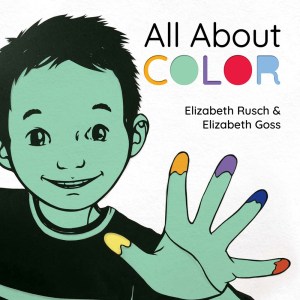 All About Color, by Elizabeth Rusch/Illustrated by Elizabeth Goss, (March 2024, Charlesbridge Publishing), $17.99, ISBN: 9781623543532
All About Color, by Elizabeth Rusch/Illustrated by Elizabeth Goss, (March 2024, Charlesbridge Publishing), $17.99, ISBN: 9781623543532
Ages -8
Rusch gets into deep stuff in this exploration of color, telling readers right off the bat that “Color doesn’t exist. The sky is not blue”, giving a few additional examples before explaining that we perceive color when light sends messages to our brains. Rusch discusses how color helps us in our day-to-day lives: they can describe emotions, like “seeing red” and “feeling blue”; they can warn us, as illustrated by the bright red triangle on a black widow spider; they can let us know when to stop and go, as with a traffic light. Goss’s boldly outlined illustration offers bright color washes to communicate Rusch’s succint explanations. Rusch uses simple sentences to allow emerging readers to enjoy this book on their own or as part of a readaloud. A good introduction to the science of color. All About Color is the companion title to All About Nothing (2023), an introduction to negative space.
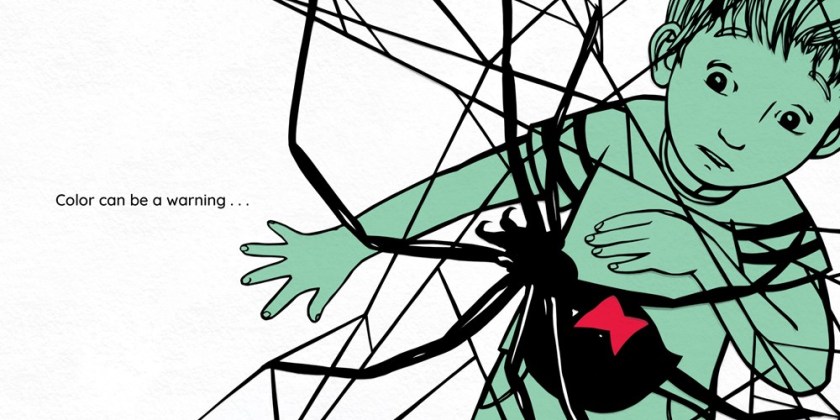
 Hands on Science: Motion, by Lola M. Schaefer/Illustrated by Druscilla Santiago, (Feb. 2024, Charlesbridge Publishing), $16.99, ISBN: 9781623542450
Hands on Science: Motion, by Lola M. Schaefer/Illustrated by Druscilla Santiago, (Feb. 2024, Charlesbridge Publishing), $16.99, ISBN: 9781623542450
Ages 4-8
This introduction to the science of motion is too much fun! Enter the Physics Lab and let the narrator take you on an interactive journey where you can poke, tilt, and push the book to learn about gravity and friction: poke a dollop of whipped cream to discover how your finger’s force can change its shape, and guide a marble through a series of inclines to see how it changes its path. Scientific terms are bolded for easy reference, and colorful illustrations keep readers engaged. Caregivers and educators will love these easy experiments: no muss, no fuss! If you have a Science Club, you may even want to set up similar experiments to guide scientists through during a readaloud. Schaefer includes examples of journaling observations and predictions; back matter includes additional ways we use forces every day, and an experiment for readers (and their grownups!) to conduct at home. This is the third entry in the Hands-On Science series by Schaefer and Santiago. A very good addition to STEM collections for emerging readers. Download the free Hands-On Science activity kit at the Charlesbridge Publishing website.

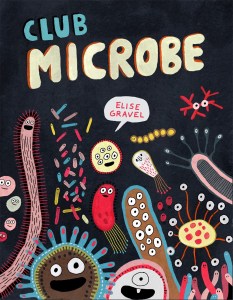 Club Microbe, by Elise Gravel, (Apr 2024, Drawn & Quarterly), $17.95, ISBN: 9781770467026
Club Microbe, by Elise Gravel, (Apr 2024, Drawn & Quarterly), $17.95, ISBN: 9781770467026